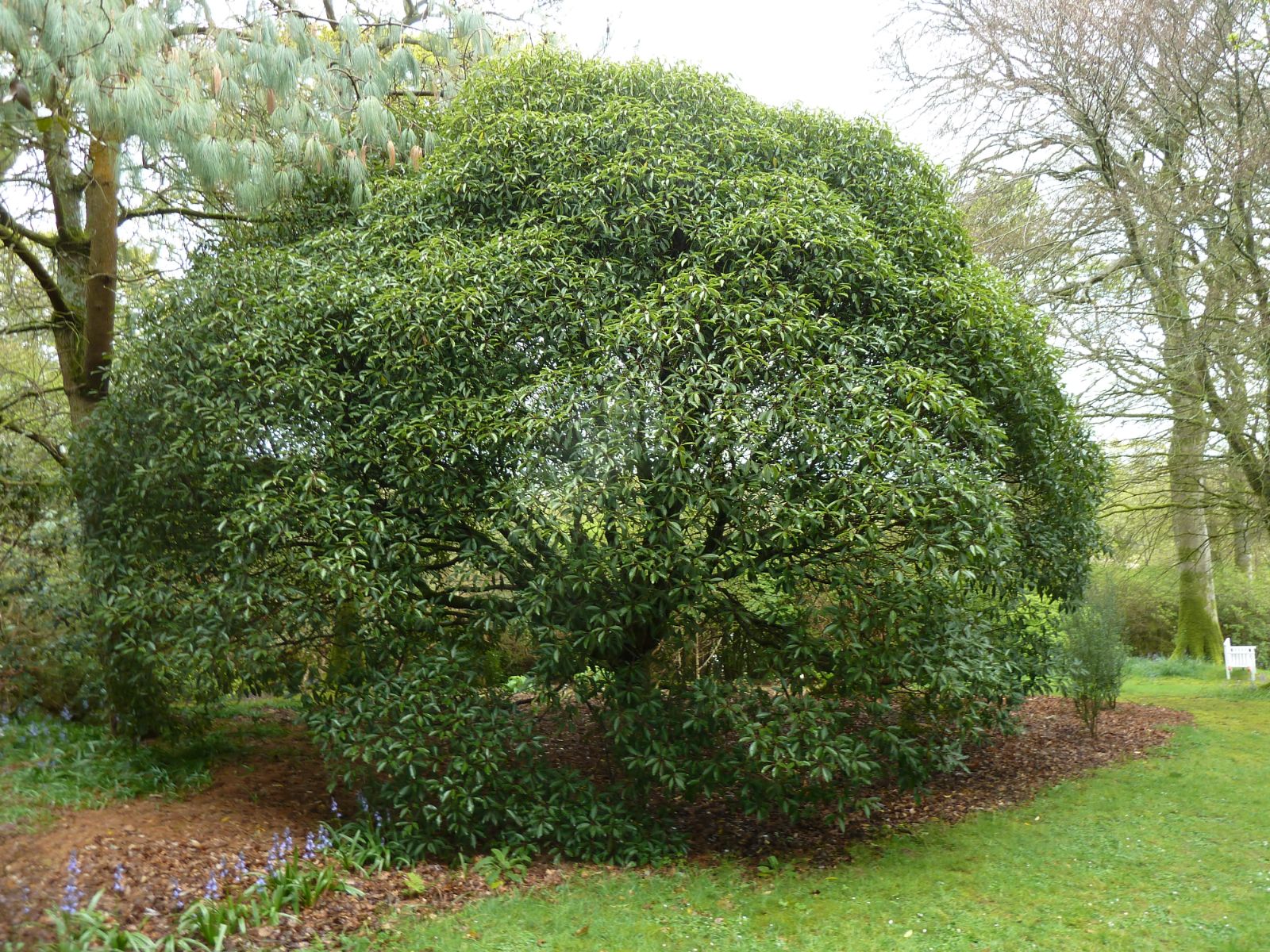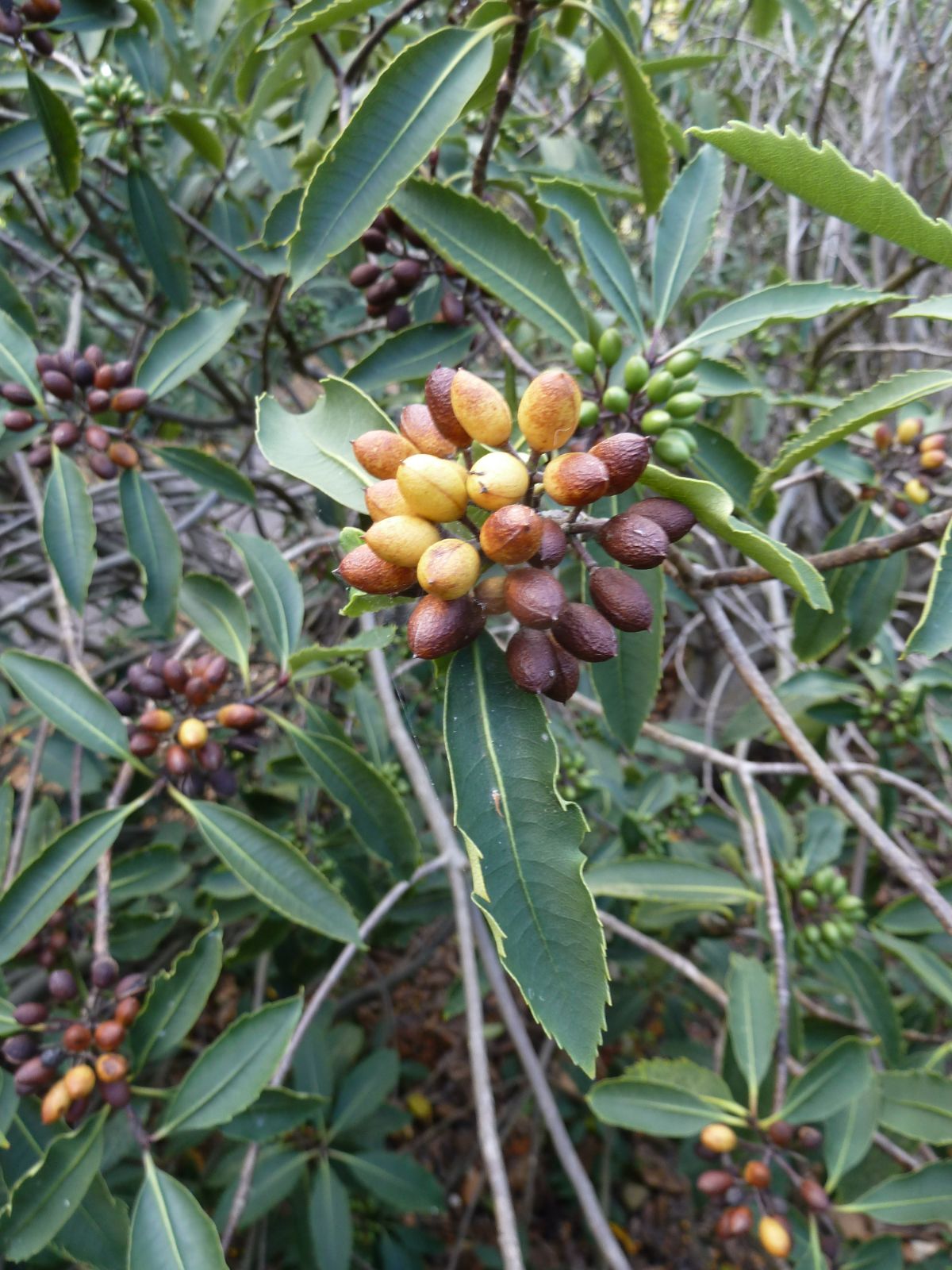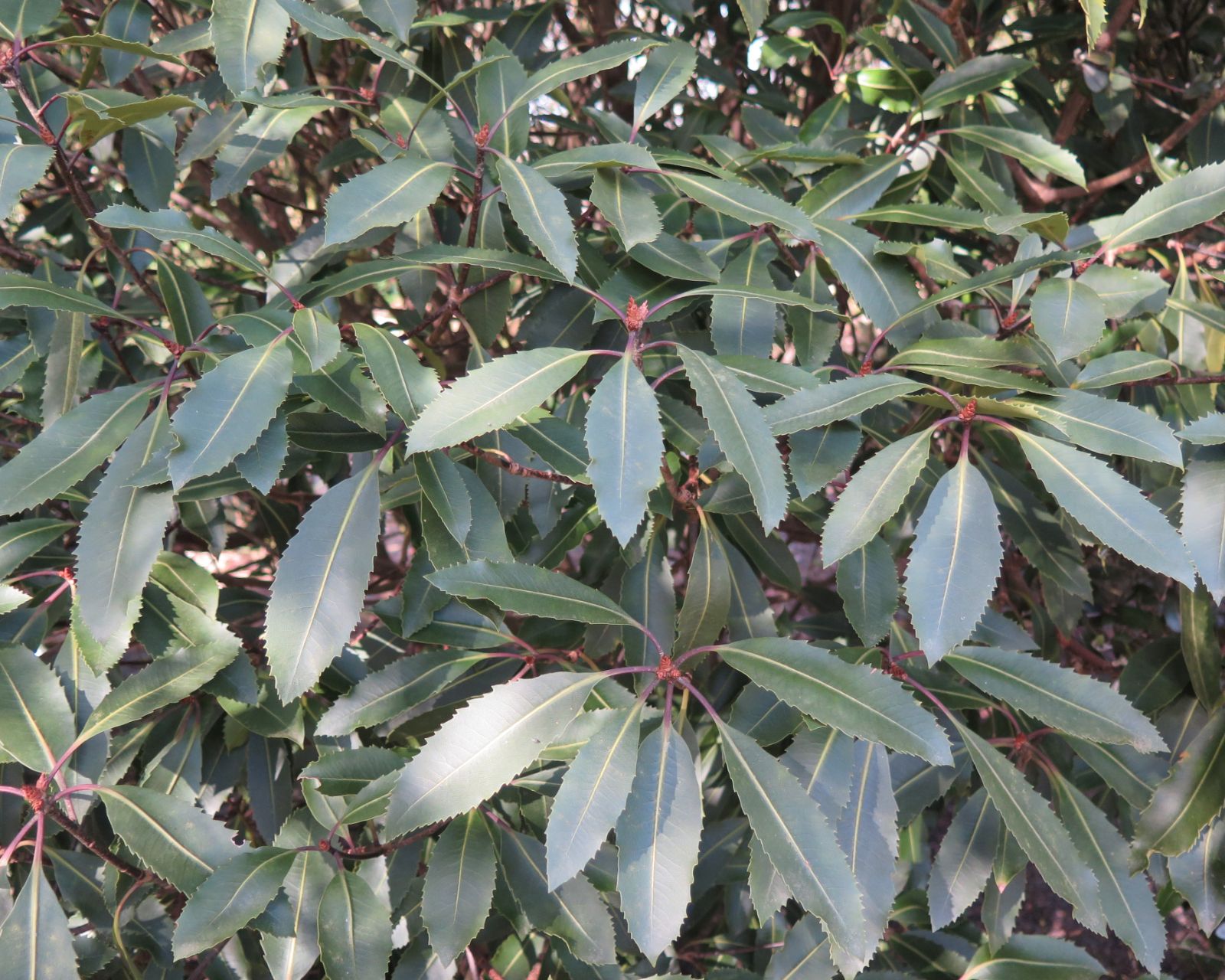Pittosporum dallii
Credits
Article from Bean's Trees and Shrubs Hardy in the British Isles
Recommended citation
'Pittosporum dallii' from the website Trees and Shrubs Online (treesandshrubsonline.
Genus
Other taxa in genus
- Pittosporum adaphniphylloides
- Pittosporum bicolor
- Pittosporum brevicalyx
- Pittosporum buchananii
- Pittosporum colensoi
- Pittosporum cornifolium
- Pittosporum crassifolium
- Pittosporum daphniphylloides
- Pittosporum divaricatum
- Pittosporum eugenioides
- Pittosporum glabratum
- Pittosporum huttonianum
- Pittosporum patulum
- Pittosporum phillyreoides
- Pittosporum revolutum
- Pittosporum rigidum
- Pittosporum tenuifolium
- Pittosporum tobira
- Pittosporum undulatum
A small evergreen tree 12 to 18 ft high in the wild, of rounded shape, with a trunk up to 8 in. in diameter; older bark pale grey; young shoots glabrous, reddish. Leaves dark dull green, crowded towards the end of the shoot; oval-lanceolate, pointed, tapered about equally towards both ends, either coarsely or slightly toothed, or entire, 21⁄2 to 41⁄2 in. long, 1⁄2 to 13⁄4 in. wide, of stiff leathery texture, soon quite glabrous, midrib raised above and beneath; stalk reddish, 1⁄3 to 3⁄4 in. long. Flowers white, fragrant, crowded numerously in a terminal cluster 1 to 2 in. across; individually 1⁄4 to 2⁄3 in. long and 1⁄2 in. wide when expanded; petals narrowly obovate; sepals awl-shaped; anthers bright yellow; flower-stalks downy. Seed-vessels woody, egg-shaped, 1⁄2 in. long, with a short spine-like tip.
Native of the South Island, New Zealand. According to Cheeseman, ‘it appears to be rare in its only known habitat in the mountains near Collingwood, Nelson, and only a limited number of adult plants have been seen’. More plants were found later, but all in the same restricted area in the mountains of N.W. Nelson. J. Dall, who discovered the species in 1905, obtained only imperfect fruiting specimens. He died in 1912, but it was found again by his friend F. G. Gibbs, in 1913, this time in bloom. Mr Gibbs, to whom Kew was indebted for seeds, described the tree as ‘far more handsome than any of the other pittosporums I have seen’. The seeds he sent to Kew lay dormant for a year. Cuttings appear difficult to root, but can be easily grafted on P. tenuifolium.
P. dallii is the only species in New Zealand with regularly coarsely toothed leaves and white flowers. On the young plants at Kew, raised from the seeds sent by Mr Gibbs, the leaves varied from being coarsely toothed to entire, and some of the leaves on adult plants may also be entire or only slightly toothed. The flowers are very rarely borne on cultivated plants, even in New Zealand. It is, however, one of the hardiest of the pittosporums.
P. dallii has attained a height of about 25 ft at Tregothnan in Cornwall and at Ilnacullin in Co. Cork, Eire.



